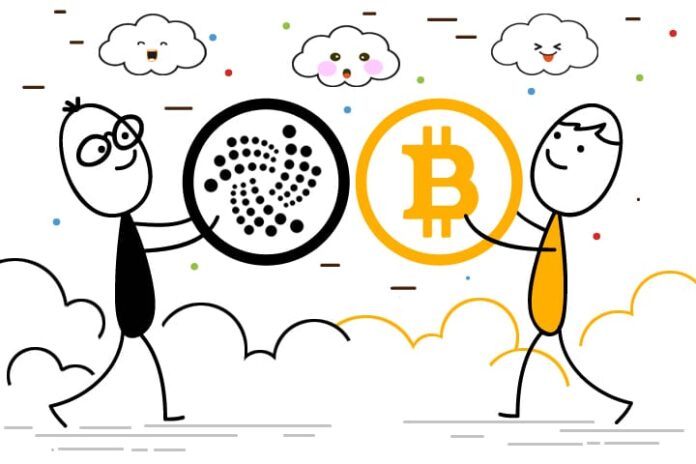The meteoric rise (and fall…and rise again) of Bitcoin over the last few weeks has been nothing short of extraordinary. Earlier this month it displaced Donald Trump as the most searched term on Google, while Blockchain.info recorded a surge of new sign ups.
With all this hype, it’s hard to imagine any other crypto would even register on the mainstream media’s radar. But one coin has. IOTA, the crypto currency designed for Internet of Things and monetisation of data, caused quite a stir last month, when word got out about its trial market place and the big businesses, including Microsoft, Samsung, Wolkswagen and Fujitsu, that had signed up. The news sparked a buying frenzy, that saw the price of an individual coin shoot from 0.33$ to 5.50$.
Better than Blockchain
A growing number of IOTA proponents are hailing the Tangle, the technology behind the crypto currency, as a replacement, or at least a strong alternative, to Blockchain.
The Tangle is a Direct Acyclic Graph (DAG). Described by the IOTA Project as ‘a revolutionary blockless distributed ledger which is scalable, lightweight and for the first time makes it possible to transfer value without any fees’.
By requiring senders in a transaction to approve two other transactions, it removes the need for dedicated miners and completely decentralises the system. Conversely, looking at Bitcoin, just eight mining pools now account for approximately three quarters of mined blocks a week, raising serious concerns about the concentration of power and their influence over the currency.
Another problem Blockchain based cryptos have yet to solve is speed. As Bitcoin becomes more mainstream, the unfortunate reality for users is frustratingly slow transactions, caused by the system having to work its way through each block. IOTA doesn’t have this issue. In fact, it actually becomes safer and faster as more people use IOTA.
Stumbling but not Falling
It’s not all plain sailing for IOTA though. It’s emergence as a viable crypto currency also makes it the subject of a lot more scrutiny and cyber-attacks. Already a number of chinks have been spotted in IOTAs armour.
Most notably, on 21st November it was the victim of a massive DDOS attack when the number of public nodes was unable to cope with the influx of spam. This presents a major scaling issue for IOTA. Sure, when it has sufficient user numbers it will be incredibly safe, but that doesn’t inspire a lot of trust for users today.
The other issue is one of image. It emerged earlier this week that Microsoft is not an official partner to IOTA’s market place. Rather it is just another participant. While positive, it is much less of an endorsement and the revelation saw IOTA’s price nose dive as low as 3.23$ on the 12th December. The price has recovered somewhat, trading at 3.86$ at the time of writing, suggesting it was a stumble rather than an unrecoverable fall. It does, however, show just how important buyer perception is in this crowded and competitive market.
With plans to expand its market place and work with more big businesses on their IoT offering, the future looks bright for IOTA. No doubt investors will track its progress with interest.
By Alan Duncan, who is Managing Director at Fintech PR agency SelectPR
















